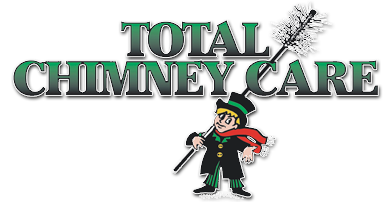What kind of shape is your oil flue liner in? It’s something most homeowners don’t give much thought to. But oil flue liners take a lot of abuse, both from the heat of your furnace and from the acidic nature of the smoke being exhausted through your chimney. Whether from age or due to other factors, your oil flue might eventually require relining.
Why Oil Flues Need to be Relined
There are actually several reasons your oil flue might require a new liner. Some of the most common reasons oil flue liners need to be replaced include:
• Flaking chimney tiles. The soot and smoke generated by your oil furnace is highly acidic. Even if you have your oil flue swept and inspected every year as recommended, the soot and smoke your oil flue endures season after season will take its toll. The tiles within the oil flue will begin to break down and flake away. Once the flue liner degrades enough, the oil flue will need to be relined.
• Water damage. Nothing damages a chimney flue quite like water. If water has made its way into your oil flue, the tile liner can crack or crumble. Unchecked water intrusion into your oil furnace flue can lead to the need for a new chimney liner.
• Improperly sized liner. If you have a new oil furnace installed, it’s likely you’ll need to have your oil flue relined. That’s because today’s more efficient oil furnaces require small liners. In fact, today’s oil furnaces can require flues that are up to 60 percent smaller than traditional ones! To make sure your new oil furnace is properly exhausting, you will need to install an oil flue liner that’s the proper size for your new furnace.
• Missing flue liner. Believe it or not, many home builders or furnace installers will skip lining a chimney altogether. This is an extremely dangerous practice that can put your home at risk of a fire. If your oil furnace flue is missing a liner, you’ll need to have one installed to keep your home safe.
Oil Flue Relining Options
How you choose to reline your oil flue likely will depend on the reason for relining your oil furnace flue. A flue that’s breaking down due to time or water damage might be able to be relined with a specialized cerfractory cement that’s poured down the flue and smoothed into place to fill in any cracks or holes in the damaged masonry. If you’re missing a liner, if your existing liner is metal or if your oil furnace flue needs to be resized to fit a newer furnace, your sweep might recommend installing a stainless steel chimney liner to restore your oil flue furnace liner.
So how do you know if your oil furnace flue needs to be relined and which method for relining your oil flue is best? Call the experts, of course! The sweeps at Total Chimney Care can clean and inspect your oil furnace flue. If you’re due for an oil flue relining, our sweeps will recommend and install the best oil flue liner for your furnace!
